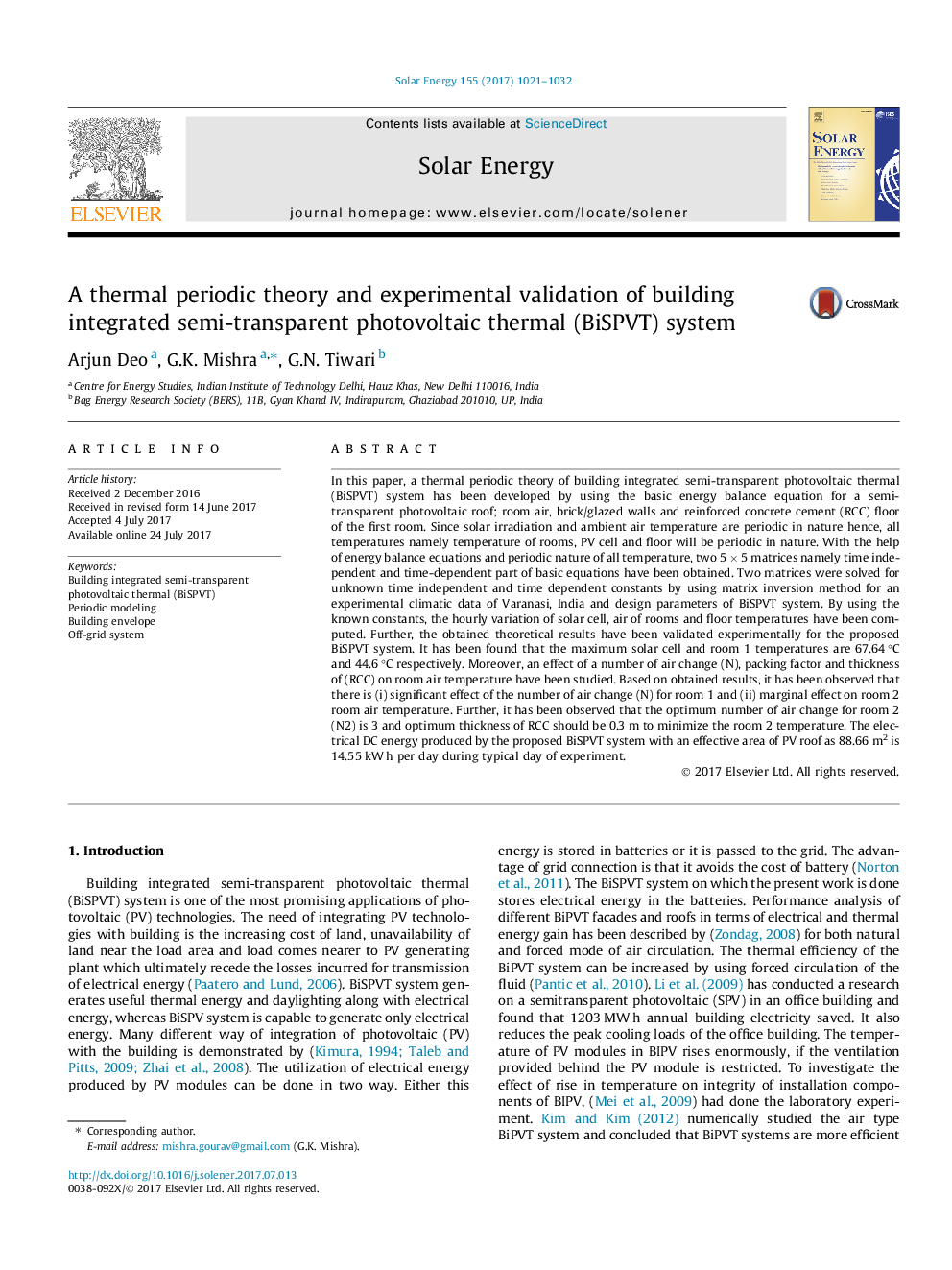| کد مقاله | کد نشریه | سال انتشار | مقاله انگلیسی | نسخه تمام متن |
|---|---|---|---|---|
| 5450689 | 1513063 | 2017 | 12 صفحه PDF | دانلود رایگان |

- A periodic model for BiSPVT system has been developed and experimentally validated.
- Fourier coefficients for solar intensity and ambient air temperature were obtained.
- Roof thickness has been optimized for BiSPVT system.
- Effect of number of air change from room air to outside has been investigated.
In this paper, a thermal periodic theory of building integrated semi-transparent photovoltaic thermal (BiSPVT) system has been developed by using the basic energy balance equation for a semi-transparent photovoltaic roof; room air, brick/glazed walls and reinforced concrete cement (RCC) floor of the first room. Since solar irradiation and ambient air temperature are periodic in nature hence, all temperatures namely temperature of rooms, PV cell and floor will be periodic in nature. With the help of energy balance equations and periodic nature of all temperature, two 5 Ã 5 matrices namely time independent and time-dependent part of basic equations have been obtained. Two matrices were solved for unknown time independent and time dependent constants by using matrix inversion method for an experimental climatic data of Varanasi, India and design parameters of BiSPVT system. By using the known constants, the hourly variation of solar cell, air of rooms and floor temperatures have been computed. Further, the obtained theoretical results have been validated experimentally for the proposed BiSPVT system. It has been found that the maximum solar cell and room 1 temperatures are 67.64 °C and 44.6 °C respectively. Moreover, an effect of a number of air change (N), packing factor and thickness of (RCC) on room air temperature have been studied. Based on obtained results, it has been observed that there is (i) significant effect of the number of air change (N) for room 1 and (ii) marginal effect on room 2 room air temperature. Further, it has been observed that the optimum number of air change for room 2 (N2) is 3 and optimum thickness of RCC should be 0.3 m to minimize the room 2 temperature. The electrical DC energy produced by the proposed BiSPVT system with an effective area of PV roof as 88.66 m2 is 14.55 kW h per day during typical day of experiment.
Journal: Solar Energy - Volume 155, October 2017, Pages 1021-1032